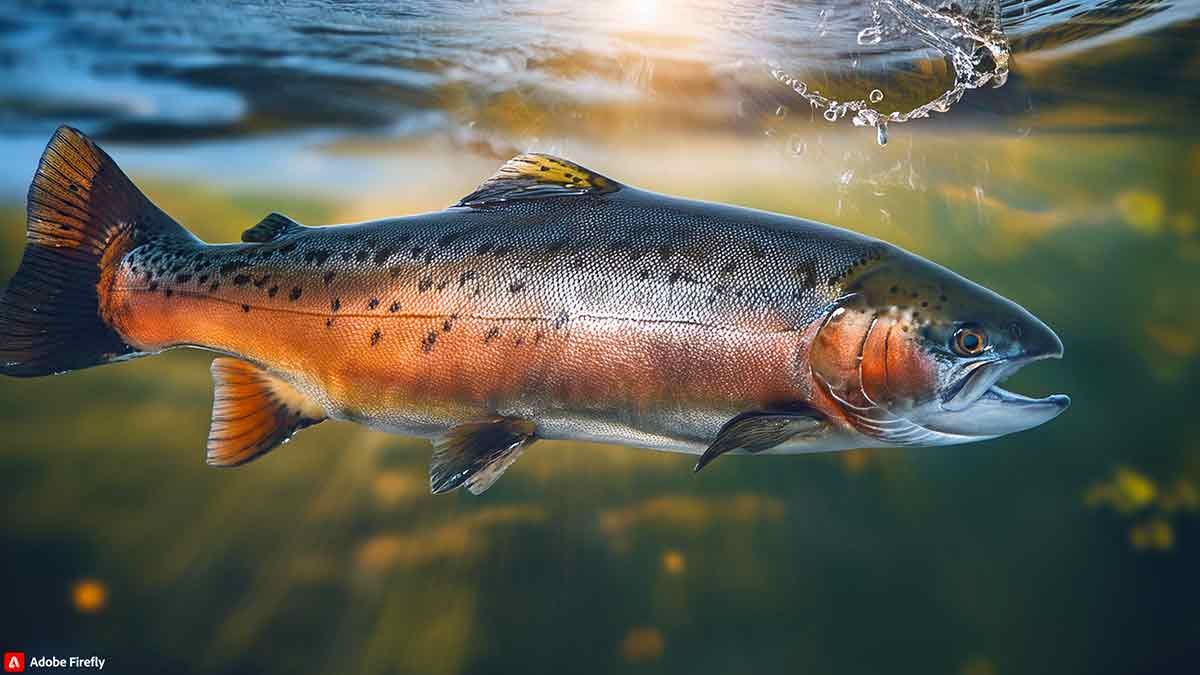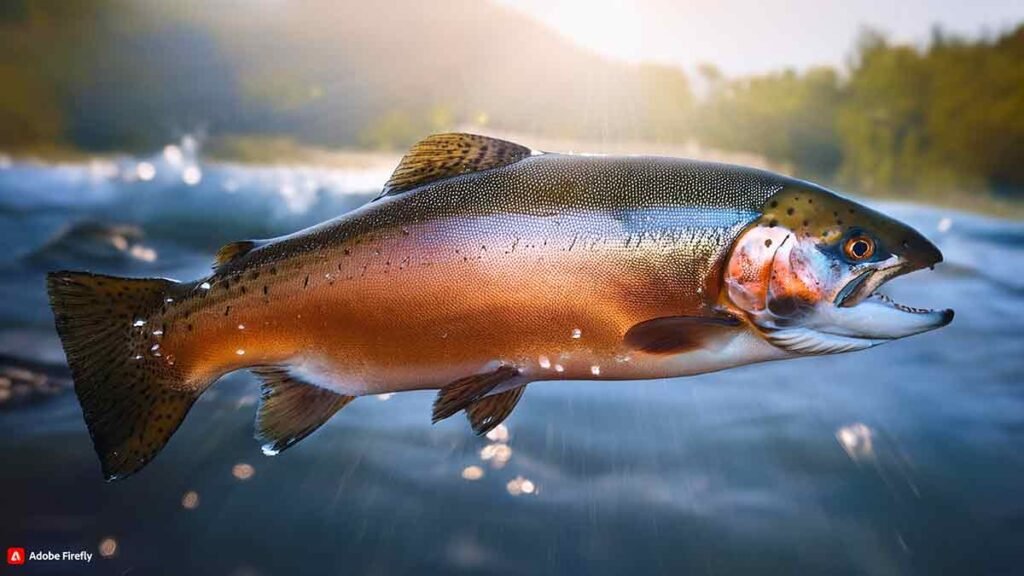
What Makes the Salmon a Good Fish
In the United States, we love our salmon! So much so that we almost loved it to the brink of extinction. Luckily, we were able to show our affection for the silver-sided beauties by changing our voracious fishing ways and improving fisheries management. We can now have our salmon and eat it too.
The health of Alaskan salmon stocks is a testament to good management practices. In 1857 the United States bought Alaska from Russia, and along with it came the seemingly endless supply of wild salmon. In 1959, Alaska became a state and inherited from federal authorities the problem of an overfished salmon population.
With great foresight, the new State of Alaska included guidelines for the sustainable management of all its natural resources in its constitution. Likewise, West Coast salmon fisheries have reformed their management to reflect sustainable fishing practices.

Where You Can Eat Good Salmon
You can feel good eating salmon from US salmon fisheries. British Columbia has also reformed its fisheries management. With the exception of its South Coast gill net and purse seine fisheries, British Columbia’s salmon fisheries are considered sustainable.
With fishing reforms now in place, the biggest issue for wild salmon on the West Coast is habitat. This is because there are so many more of us living in the Lower 48 and in the same regions that wild salmon pass though on their way to spawn. Meeting human needs for energy, food, and shelter has caused salmon habitat loss and degradation due to dams, logging, manure, and chemical runoff from agriculture, and development.
Our cars are another big contributor:
they leak oil, spread copper-containing dust from their brakes, and spit out the exhaust with invisible chemicals; all of these pollutants find their way into the waterways where salmon return. But don’t despair! As eaters of wild salmon, there are things we can do to ensure our land-based lives are not in conflict with those of salmon and their need for a pristine habitat in which to reproduce the next generation of fish.
Little things can make a big difference. For example, turn off the water when you’re brushing your teeth for less water down the drain and thus more in streams. Use a car wash instead of washing your vehicle in the driveway.
Carwash facilities filter wastewater, whereas your soapy, dirty water goes into the ocean by way of the storm drain on the street. Keep your car tuned up to minimize leaks of all kinds. You get the idea. Look for more tips on the Oregon and Washington Salmon Safe websites, which are listed in the Sustainable Seafood Resources.
Salmon Names
I made up a mnemonic to remember the five salmon: Can (chinook) Pink (pink) Socks (sockeye) Keep (keta) you Covered (coho)?
Chinook (Oncorhynchus tshawytscha)
aka kings, springers, and tyee, are the largest of the salmon species (often more than 25 pounds, the record chinook weighed in at 146 pounds!) and the one with the most fat. Chinook salmon are beloved throughout the world.
Like oysters that are often known by the waters in which they grow, salmon differ in fat content and flavor depending on the rivers they were spawned in and what they ate on their way home to spawn. Copper River salmon is a well-known example of a fish market by its river’s name.
A rare genetic variation that affects only 1 percent of chinook causes its flesh to be white; the meat is sold as “white king” or “ivory king.”Even more rare is the marbled chinook caught off the Washington coast. Try white or marbled chinook if you happen to see it.
Pink salmon (Oncorhynchus gorbuscha)
I encourage you (as does your wallet), however, to explore the other four species of wild salmon. Think of chinook as you would a New York steak or filet mignon: best for occasional eating, whereas more reasonably priced cuts are great on a more regular basis.
There is much to enjoy in a well-handled fresh or carefully frozen pink, sockeye, coho, or chum salmon. aka humpback or humpies, are the smallest of the salmon species (weighing from 3 to 12 pounds) and the most plentiful. They are typically sold in cans or smoked, though if you find them fresh, I encourage you to cook with the fillets. Keep in mind that pink salmon is softer in texture and quite lean and therefore less forgiving in the overcooking department.
Sockeye (Oncorhynchus nerka)
aka reds or blueback, average 6 to 9 pounds and have deep-red flesh and thinner fillets than the much bigger chinook. Sockeyes are valued for their delicious fat (second to chinook), firm texture, and pronounced flavor.
Coho (Oncorhynchus kisutch)
aka silvers, are a popular sport fish in the Pacific Northwest, valued for their reckless, spirited chase of a lure. They average 6 to 12 pounds. Of the five salmon species, coho has the third-highest amount of fat and should be considered a great value: it has good flavor and is much more affordable per pound than sockeye or chinook.
Keta (Oncorhynchus keta)
aka chum or dogs, ranging from 6 to 17 pounds, are the last salmon species to spawn and are considered the least valuable commercially. Chum often gets a bad rap in the culinary world. I find this to be a crisis of imagination and a waste of a good protein source. Because of how lean they are, I prefer to steam or smoke them or cook them in chowders to preserve their moisture. Ikura (see here) are the eggs from keta salmon.
SEASON
Salmon fishing seasons vary from state to state, but in general, here are some guidelines. Chinook: May to September, with a southeast Alaska winter season from mid-October to mid-April; Southern Oregon is the only region in the Lower 48 to have a Chinook season in October. Pink: June to November. Sockeye: May to September. Coho: June to October. Keta: June to November.